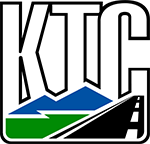
A. Russell Romine
Russ Romine has been a lifelong champion of Kentucky’s transportation system. He began his career with the Kentucky Transportation Cabinet in 1956 when he accepted a summer job as “Levelman” in the Elizabethtown office.
In 1958, Mr. Romine transferred to Covington where he and his crew began work on Kentucky’s I-75 project at the Ohio River. A promotion in 1966 brought him to Frankfort, and in 1968 he was named Chief District Engineer for the Louisville office at the age of 33, the youngest at the time. In 1972, he returned to Frankfort as Director of Maintenance and was promoted to Assistant State
Highway Engineer for Operations in 1973, a title he held until his retirement in 1990.
During his tenure, Mr. Romine developed and implemented an operations management system that allocated funds, equipment and manpower to the highway districts based on their work program. He also enhanced the winter maintenance program by improving salt storage throughout the state and allocating snow and ice equipment based on an established priority removal system. Mr. Romine also developed and introduced a pavement evaluation system designed to objectively assess pavement conditions and determine where maintenance funding could most effectively be used. Because of his work, Kentucky’s Interstate and Parkway system was recognized as one of the nation’s best.
Following his retirement from the public sector, Mr. Romine undertook new challenges in the private sector. He spent three years in Illinois where he led the Strategic Highway Research Program’s (SHRP) H-106 study; at the time, the most extensive pavement maintenance experiment ever conducted. This landmark study led to innovations in joint seal materials and applications, as
well as the development of Highway Maintenance Quality Assurance standards and many associated guidance manuals.
Mr. Romine returned to Kentucky in 1993 and formed Kentucky Logo Sign Group, Inc. The company became the first in the state to install logo and service informational signs at interchanges on controlled access highways. This revolutionary new concept has grown to become one of the most recognizable and popular travel aids along Kentucky roadways.
